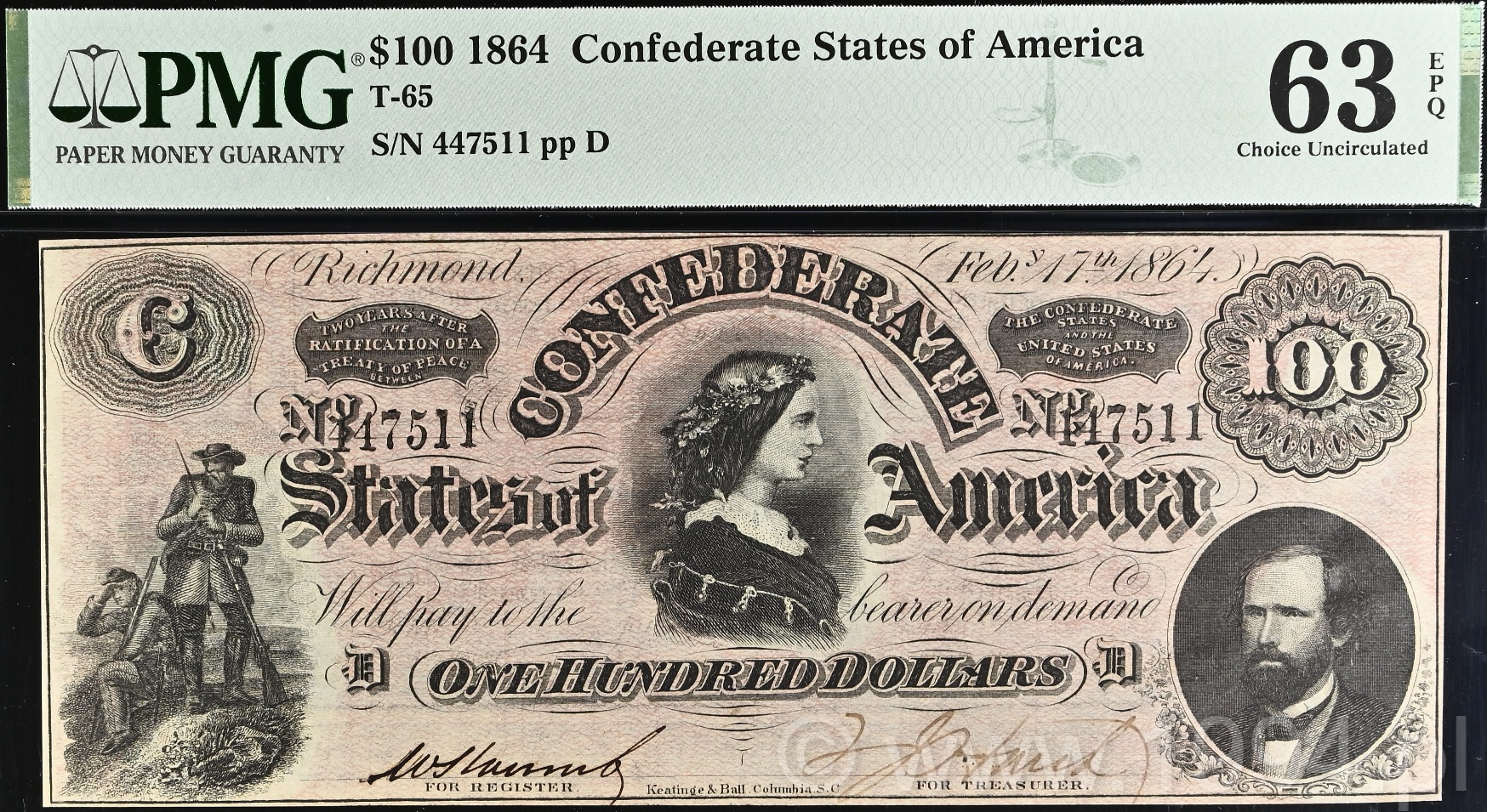Description and research notes
The one-hundred-dollar note of the February 17, 1864 Confederate issue, cataloged as T-65 (Criswell 121), was the highest denomination of the Confederacy’s final paper-money series. Printed by Keatinge & Ball in Columbia, South Carolina, this design became the standard visual icon of Confederate finance, widely distributed in the waning months of the Civil War when inflation and military collapse had eroded the South’s economy.
The central vignette features an allegorical female portrait often described as Lucy Pickens of South Carolina, the 'Queen of the Confederacy,' crowned with a garland and facing right beneath an arched CONFEDERATE STATES OF AMERICA title. To the left stand two Confederate soldiers in field gear, one leaning on a rifle and the other seated—an image intended to evoke patriotic resolve amid hardship. At lower right appears the engraved bust of George W. Randolph, Confederate Secretary of War and a grandson of Thomas Jefferson. The red-pink background tint and complex geometric lathework combine artistry and anti-counterfeiting purpose, while the large numeral 100 counters anchor each end of the note.
The printed obligation reads: 'Two years after the ratification of a treaty of peace between the Confederate States and the United States of America, the Confederate States of America will pay to the bearer on demand One Hundred Dollars.' This clause illustrates the Confederacy’s uncertain financial horizon, linking redemption to a peace treaty that never came. Each note was individually numbered and hand-signed by Confederate clerks; this example bears serial number 447511, plate letter D, and remains sharply defined with the characteristic salmon underprint.
As an engraving, the T-65 represents Keatinge & Ball’s most accomplished work, executed under wartime scarcity using re-engraved northern plates and improvised presses. The portraits and typography demonstrate how the artistry of American banknote engraving persisted even under blockade. Certified PMG 63 EPQ Choice Uncirculated, this note exhibits original color, fresh paper texture, and full margins—a superb representative of the Confederacy’s most iconic and widely circulated design, and a tangible witness to the financial struggles of a nation at war with itself.
